How to reduce pig aggression?
Pig aggression is a great challenge for the pig husbandry. In modern pig production systems, growing animals encounter multiple stressors during their lifespan. Hence, this potentially negatively impacts pig health, behaviour, welfare, and production. A very common stressor is the mixing of pigs. Other unexpected stressors can also affect animal behaviour, such as out-of-feed events or feed deprivation.
During the rearing period, aggressive behaviour, mounting, and repeatedly chewing on tails or ears is often observed in pens, especially following stressful events. As well, entire males regularly start mounting behaviour once sexual maturity is reached. However, these harmful behaviours can directly cause injury, lameness, infection, and other welfare-impairing problems in the affected pig. They are often associated with chronic stress and immunosuppression.
Mixing: hierarchy needs to be established
Aggression and tail biting are considered severe welfare problems in pig husbandry (Scollo et al., 2017). In recent years, tail docking has become a more controversial procedure in the rearing of pigs. Several EU states have (already) banned this procedure (e.g. Finland, Sweden, Norway, and Italy).
Regardless, the presence of entire tails is also associated with increased occurrences of outbreaks of tail biting. Hence, strategies to reduce the occurrence of aggression and tail biting are important for the pig business and will improve animal welfare and production of pigs.
Housing conditions in modern, high pig producing systems are associated with increased undesirable behaviours such as aggression, belly nosing and ear and tail biting. The barren environment does not allow pigs to perform their natural foraging behaviours.
Question is “How can we reduce the occurrence of aggressive behaviour and tail biting in pigs?”
Factors associated with pig aggression and tail biting:
- stress
- barren environment
- mixing of pigs
- unstable groups
- absence of barriers / hiding areas
- reaching sexual maturity in entire boars
- absence of environmental enrichment and toys
How nutrition can reduce pig aggression
Changes in housing environment such as the provision of rooting material (straw), reducing mixing of unfamiliar pigs, or increasing space allowance might be difficult to implement in modern day pig units. Therefore, other strategies are sought to reduce behavioural problems and increase animal welfare. Different feed ingredients have been associated with calming pigs and reducing aggression and stress. Increasing fibre levels in gestational diets in sows is a well-known measure to increase calmness through an increased gut fill and satiety (Meunier-Salaün & Bolhuis, 2014). The amino acid Tryptophan (Trp) has potential to calm animals. Growing gilts had reduced activity levels and lower aggressive encounters when fed Trp (Poletto et al., 2014).
The inclusion of increased levels of Magnesium (Mg) could also result in calmer pigs that experience less stress (Kuhn et al., 1981; Peeters et al., 2005). Increased Mg levels are associated with a decreased neuromuscular stimulation (D’Souza et al., 1998). The ability of the pig to absorb and utilise the dietary Mg depends on the source of Mg used, thereby deciding on the efficacy of this Mg source (D’Souza et al., 2000). As with most minerals, inorganic forms of Mg are often less available to the pig compared to organic minerals.
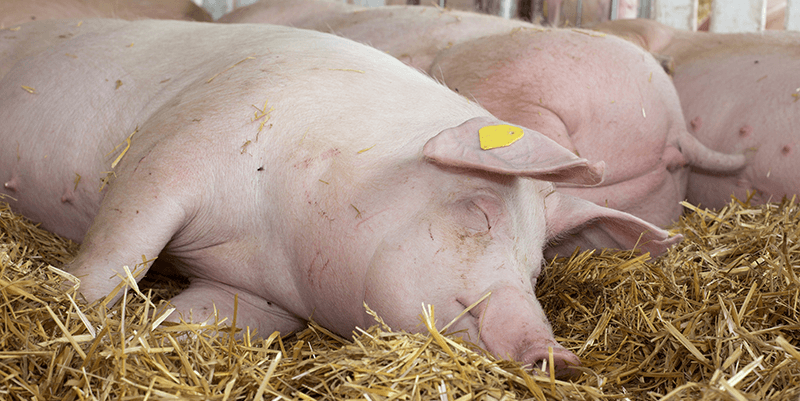
A novel pig nutrition strategy to reduce pig aggression was confirmed by the Irish research institute Teagasc in 2013. O’Driscoll and co-workers performed a study with CeltiCal, a 100% natural animal feed ingredient. It meets the nutrient requirements for nutrition in sows, piglets and fattening pigs. The basis is a marine mineral complex with 74 bioavailable minerals. The unique honeycomb structure of CeltiCal allows for a rapid solubilisation of the marine mineral matrix. Hence, CeltiCal delivers perfectly bioavailable macro and trace minerals in an ionised form to the digestive system of a pig.
CeltiCal: a novel nutritional solution
An experiment with CeltiCal was performed by O’Driscoll and co-workers (2013a and 2013b). In this experiment, piglets were selected at weaning and assigned to one of 4 dietary treatments:
- Control – Male
- Control – Female
- CeltiCal – Male
- CeltiCal – Female
CeltiCal was included at 0.5% at the expense of limestone and balanced for calcium. Piglets were housed in single sex pens of 14 piglets. At day 28 post-weaning, 7 piglets from each pen were mixed with 7 piglets from another pen within their respective dietary treatments.
Following mixing, continuous behavioural observations were made for the first 3 hours post-mixing and saliva was collected at 1 hour post-mixing to measure cortisol levels. Afterwards, behaviour was recorded weekly together with the collection of saliva from focal pigs until the pigs were 120 days old (± 60 kg live weight). At day 112, an out-of-feed event was arranged for 21 hours and again, behaviour was recorded together with saliva collection for cortisol measurements.
Prevalence and impact of tail biting (source: Haigh & O’Driscoll, Teagasc 2016)

CeltiCal reduces overall stress and pig aggression
The work of O’Driscoll et al. (2013) clearly demonstrates that:
- In the overall growing period, pigs fed diets with 0.5% CeltiCal had less aggressive encounters with their pen mates (P < 0.01)
- The male pigs mounted 3 times lower when fed a CeltiCal diet (P<0.01)
- Female pigs had less skin lesions due to CeltiCal, especially around their shoulders and ears (P<0.01). These body parts are most likely to be affected when pigs perform two-way aggressive behaviour (Turner et al., 2006)
- With a CeltiCal diet less time was spent on harmful behaviour. CeltiCal reduced this by ±1.6 s in a total of 5 minutes. Extrapolation of this towards a full day of 24 hours means that pigs would spent 7.6 hours less time on harmful behaviour per pen
This indicates that pigs fed diets with CeltiCal are calmer and subsequently have more time to spent on eating, thereby improving both welfare and production.
Cortisol levels were measured each week in the focal pigs. Pigs fed the diets with CeltiCal had reduced salivary cortisol levels. This points towards a reduced overall stress level, meaning that pigs are calmer and experience less stress. This supports the findings of reduced aggression when CeltiCal was fed. Cortisol levels have been found to rise when stress and aggressive behaviour occur frequently. The reduced cortisol levels found in this experiment might also be associated with the reduced occurrence of stomach ulcers, as discussed in the article “How to prevent gastric ulcers in pigs?”

CeltiCal reduced pig aggression (source: O’Driscoll et al., 2013)

CeltiCal increased the time spent on eating by a pig (source: O’Driscoll et al., 2013)
Calmer pigs around stressful events when feeding CeltiCal
Pigs are highly hierarchal animals, which explains the fighting around mixing of pigs from different origins (litters or pens). The work of O’Driscoll et al. (2013) shows that pigs responded calmer and more relaxed when fed CeltiCal around stressful events such as mixing and the deprivation of feed. In short:
- CeltiCal reduced the amount of and time spent on antagonistic behaviours (P<0.05)
- Pigs fed CeltiCal lay down faster after mixing (P=0.09)
- As in the overall period, CeltiCal reduced the cortisol levels following the mixing event
- Pigs fed CeltiCal had less skin lesions following the antagonistic interactions (P<0.05)
This indicates that the interactions were resolved quicker by the pigs and thereby settling the hierarchy in the pen faster with CeltiCal. It also implies that CeltiCal reduces pig aggression after the stress of the out-of-feed event. Hence, CeltiCal helps the pig to cope with stressors.

CeltiCal reduced the excretion in the saliva of the stress hormone cortisol (source: O’Driscoll et al., 2013)
Conclusions
To summarize, pig aggression, tail biting and other antagonistic behaviour is commonly observed in commercial pig farms. The exact mechanisms behind the onset of this behaviour is not always clear, especially when tail biting is involved. To ensure Performance Excellence, it is important that pigs do not hurt each other or cause other performance and welfare implications associated with behavioural problems.
The inclusion of CeltiCal results in pigs that experience less stress and are therefore better able to cope with stressful events around mixing and other occasions. This results in pigs that are involved in less agonistic interactions and have less skin lesions.
The research project of O’Driscoll et al. (2013) is published by the scientific journal Animal and Applied Animal Behaviour Science. Download the full report here and get powered by our science.

CeltiCal offers nutritional solutions for:
- animal welfare, reduce stress level in pigs
- easy to manage, calm acting pigs
- settling the group hierarchy faster, less pig aggression
- increase pig production, less skin lesions
Related articles
 https://celticseaminerals.com/wp-content/uploads/2021/02/Transition-cow-Acid-Buf-CSM-800x600-1.png
600
800
Patricia
https://celticseaminerals.com/wp-content/uploads/2020/01/Celtic_13.png
Patricia2021-02-08 15:05:032023-03-02 13:35:35Transition Cow Management
https://celticseaminerals.com/wp-content/uploads/2021/02/Transition-cow-Acid-Buf-CSM-800x600-1.png
600
800
Patricia
https://celticseaminerals.com/wp-content/uploads/2020/01/Celtic_13.png
Patricia2021-02-08 15:05:032023-03-02 13:35:35Transition Cow Management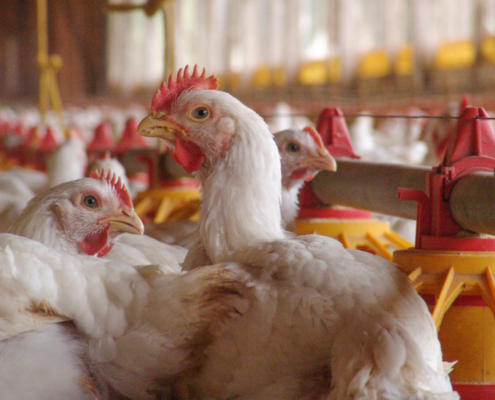 https://celticseaminerals.com/wp-content/uploads/2020/11/CSM-CeltiMin-layers-featured-image-webpage-800x600-1.png
600
800
Patricia
https://celticseaminerals.com/wp-content/uploads/2020/01/Celtic_13.png
Patricia2020-11-03 15:41:302023-03-02 13:36:21How to prevent eggshell quality problems?
https://celticseaminerals.com/wp-content/uploads/2020/11/CSM-CeltiMin-layers-featured-image-webpage-800x600-1.png
600
800
Patricia
https://celticseaminerals.com/wp-content/uploads/2020/01/Celtic_13.png
Patricia2020-11-03 15:41:302023-03-02 13:36:21How to prevent eggshell quality problems?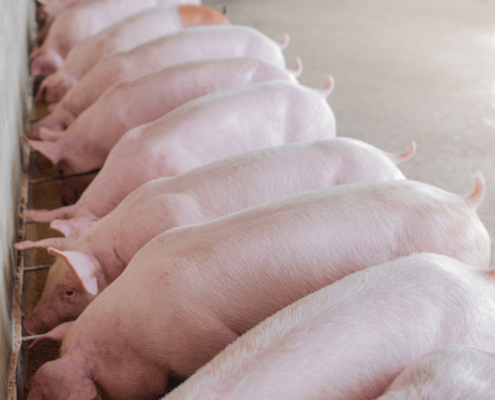 https://celticseaminerals.com/wp-content/uploads/2020/09/CSM-featured-image-gastric-pH-800x600px.png
600
800
Patricia
https://celticseaminerals.com/wp-content/uploads/2020/01/Celtic_13.png
Patricia2020-09-20 15:10:092023-03-02 13:36:48How gastric pH affects pig gut health
https://celticseaminerals.com/wp-content/uploads/2020/09/CSM-featured-image-gastric-pH-800x600px.png
600
800
Patricia
https://celticseaminerals.com/wp-content/uploads/2020/01/Celtic_13.png
Patricia2020-09-20 15:10:092023-03-02 13:36:48How gastric pH affects pig gut health https://celticseaminerals.com/wp-content/uploads/2020/07/CSM-featured-image-heat-stress-asia.png
600
800
Patricia
https://celticseaminerals.com/wp-content/uploads/2020/01/Celtic_13.png
Patricia2020-07-28 08:45:572023-03-02 13:38:15Heat stress in dairy cows
https://celticseaminerals.com/wp-content/uploads/2020/07/CSM-featured-image-heat-stress-asia.png
600
800
Patricia
https://celticseaminerals.com/wp-content/uploads/2020/01/Celtic_13.png
Patricia2020-07-28 08:45:572023-03-02 13:38:15Heat stress in dairy cows https://celticseaminerals.com/wp-content/uploads/2020/06/CSM-featured-image-feed-efficiency-800x600px.png
600
800
Patricia
https://celticseaminerals.com/wp-content/uploads/2020/01/Celtic_13.png
Patricia2020-06-30 12:28:302023-03-02 13:39:19Improving feed efficiency in dairy cows
https://celticseaminerals.com/wp-content/uploads/2020/06/CSM-featured-image-feed-efficiency-800x600px.png
600
800
Patricia
https://celticseaminerals.com/wp-content/uploads/2020/01/Celtic_13.png
Patricia2020-06-30 12:28:302023-03-02 13:39:19Improving feed efficiency in dairy cows https://celticseaminerals.com/wp-content/uploads/2020/06/CSM-featured-image-piglets-sleeping-800x600px.png
600
800
Patricia
https://celticseaminerals.com/wp-content/uploads/2020/01/Celtic_13.png
Patricia2020-06-23 15:33:152023-03-02 13:40:54How to reduce pig aggression?
https://celticseaminerals.com/wp-content/uploads/2020/06/CSM-featured-image-piglets-sleeping-800x600px.png
600
800
Patricia
https://celticseaminerals.com/wp-content/uploads/2020/01/Celtic_13.png
Patricia2020-06-23 15:33:152023-03-02 13:40:54How to reduce pig aggression? https://celticseaminerals.com/wp-content/uploads/2020/06/CSM-featured-image-beef-cattle-charolais-800x600px.png
600
800
Patricia
https://celticseaminerals.com/wp-content/uploads/2020/01/Celtic_13.png
Patricia2020-06-16 07:25:322023-03-02 13:41:17Fiber digestion drives beef cattle performance
https://celticseaminerals.com/wp-content/uploads/2020/06/CSM-featured-image-beef-cattle-charolais-800x600px.png
600
800
Patricia
https://celticseaminerals.com/wp-content/uploads/2020/01/Celtic_13.png
Patricia2020-06-16 07:25:322023-03-02 13:41:17Fiber digestion drives beef cattle performance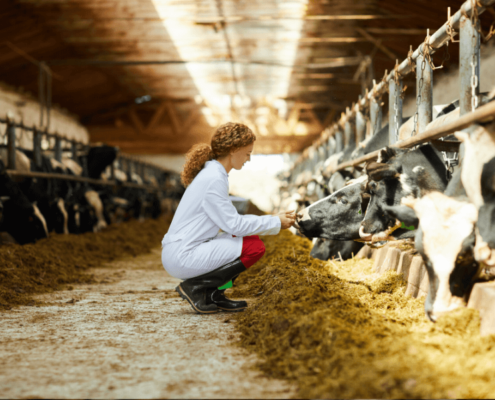 Celtic Sea Minerals
https://celticseaminerals.com/wp-content/uploads/2020/06/CSM-featured-image-dairy-cow-neville-800x600px.png
600
800
Patricia
https://celticseaminerals.com/wp-content/uploads/2020/01/Celtic_13.png
Patricia2020-06-01 20:53:282023-03-02 13:44:46How a rumen buffer drives dairy performance
Celtic Sea Minerals
https://celticseaminerals.com/wp-content/uploads/2020/06/CSM-featured-image-dairy-cow-neville-800x600px.png
600
800
Patricia
https://celticseaminerals.com/wp-content/uploads/2020/01/Celtic_13.png
Patricia2020-06-01 20:53:282023-03-02 13:44:46How a rumen buffer drives dairy performance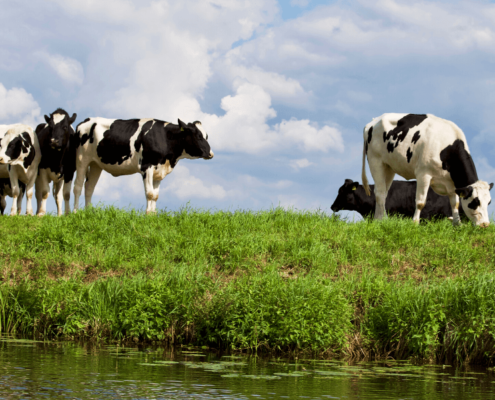 https://celticseaminerals.com/wp-content/uploads/2020/05/CSM-featured-image-holstein-cow-gras-800x600px.png
600
800
Patricia
https://celticseaminerals.com/wp-content/uploads/2020/01/Celtic_13.png
Patricia2020-05-24 21:54:212023-03-02 13:45:11How to reduce the risk for grass staggers?
https://celticseaminerals.com/wp-content/uploads/2020/05/CSM-featured-image-holstein-cow-gras-800x600px.png
600
800
Patricia
https://celticseaminerals.com/wp-content/uploads/2020/01/Celtic_13.png
Patricia2020-05-24 21:54:212023-03-02 13:45:11How to reduce the risk for grass staggers? https://celticseaminerals.com/wp-content/uploads/2020/05/CSM-featured-image-pig-nose-800x600px.png
600
800
Patricia
https://celticseaminerals.com/wp-content/uploads/2020/01/Celtic_13.png
Patricia2020-05-12 22:21:192023-03-02 13:46:30How to prevent gastric ulcers in pigs?
https://celticseaminerals.com/wp-content/uploads/2020/05/CSM-featured-image-pig-nose-800x600px.png
600
800
Patricia
https://celticseaminerals.com/wp-content/uploads/2020/01/Celtic_13.png
Patricia2020-05-12 22:21:192023-03-02 13:46:30How to prevent gastric ulcers in pigs? Celtic Sea Minerals
https://celticseaminerals.com/wp-content/uploads/2020/04/CSM-Iceland-Marine-Minerals.png
600
800
Patricia
https://celticseaminerals.com/wp-content/uploads/2020/01/Celtic_13.png
Patricia2020-04-20 07:15:212023-03-02 13:48:33Marine Minerals Nutrition Platform
Celtic Sea Minerals
https://celticseaminerals.com/wp-content/uploads/2020/04/CSM-Iceland-Marine-Minerals.png
600
800
Patricia
https://celticseaminerals.com/wp-content/uploads/2020/01/Celtic_13.png
Patricia2020-04-20 07:15:212023-03-02 13:48:33Marine Minerals Nutrition Platform Celtic Sea Minerals
https://celticseaminerals.com/wp-content/uploads/2020/04/CSM-dairy-cow-udder-milk-fat.png
600
800
Patricia
https://celticseaminerals.com/wp-content/uploads/2020/01/Celtic_13.png
Patricia2020-04-19 18:50:522023-03-02 13:47:30How to increase butterfat in dairy cows?
Celtic Sea Minerals
https://celticseaminerals.com/wp-content/uploads/2020/04/CSM-dairy-cow-udder-milk-fat.png
600
800
Patricia
https://celticseaminerals.com/wp-content/uploads/2020/01/Celtic_13.png
Patricia2020-04-19 18:50:522023-03-02 13:47:30How to increase butterfat in dairy cows?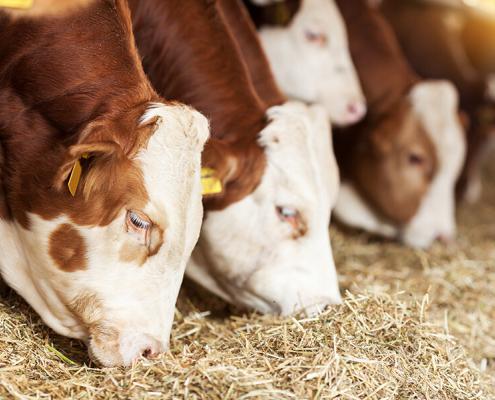 Celtic Sea Minerals
https://celticseaminerals.com/wp-content/uploads/2020/02/koe2.jpg
600
800
Patricia
https://celticseaminerals.com/wp-content/uploads/2020/01/Celtic_13.png
Patricia2020-02-14 21:43:062023-03-02 13:47:50How to prevent rumen acidosis?
Celtic Sea Minerals
https://celticseaminerals.com/wp-content/uploads/2020/02/koe2.jpg
600
800
Patricia
https://celticseaminerals.com/wp-content/uploads/2020/01/Celtic_13.png
Patricia2020-02-14 21:43:062023-03-02 13:47:50How to prevent rumen acidosis?You want to get powered by our science?

Strand Farm
Curraghbinny
Carrigaline
Co.Cork
P43 NN62, Ireland
T: +353 21 437 8377
E: info@celticseaminerals.com
Our marine minerals are fully compliant with the following globally recognised quality assurance schemes:



